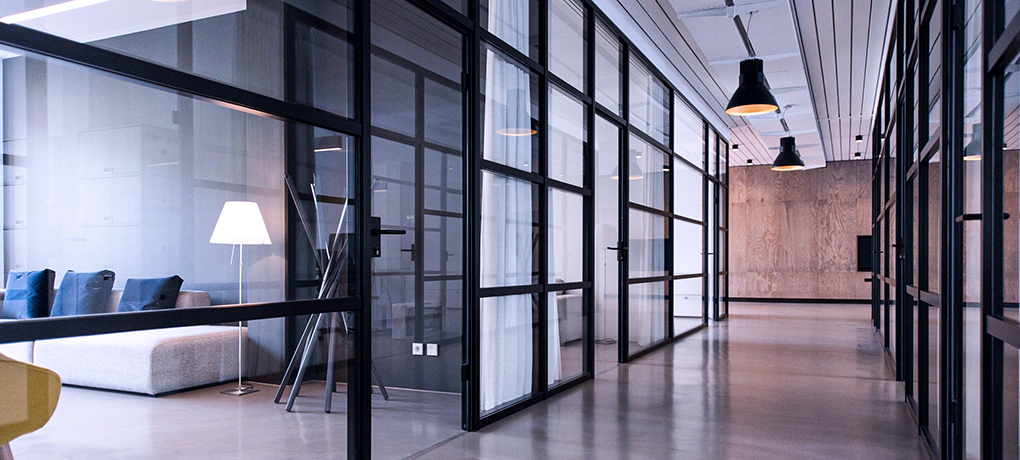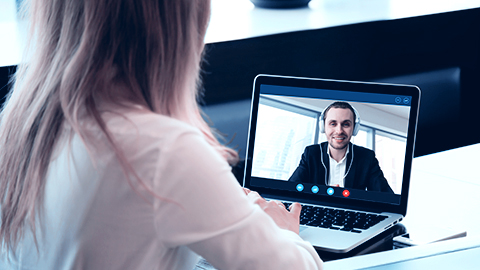The COVID-19 crisis has redefined the work environment, urging businesses around the globe to adopt remote work. The mass shift to remote work has set a precedent—for many companies, much of the output that used to be delivered on-site could be produced remotely with the same quality and efficiency. That said, as companies adapt to the situation, what will the “return to work” actually look like? With an emphasis on safety post-pandemic, flexible working arrangements and adherence to health guidelines will be key components of workplace design.
Office in the Post-Pandemic Reality
COVID-19 upturned the idea of the office as the core component in how work is done. Before the crisis, most considered the office as the catalyst for productivity, collaboration, and innovation. Many companies had successfully used video conferencing tools and communication software to achieve satisfactory employee engagement and output delivery when the pandemic rendered the workforce remote. However, not everyone can perform remote work entirely. For some types of projects, being physically present is necessary.
Employers should keep this in mind when planning the return to work and redesigning workplaces.
How to Redesign Workplace
1. Analyze and Optimize Remote Work Environment
With social distancing and the uncertain future situation with the pandemic, it’s likely your workforce will be relying on remote tools long-term. Even if the situation improves markedly, a strong remote work infrastructure will give companies resilience and readiness for the future.
Start planning the return to the office with the analysis and improvement of the current remote work environment for employees. Nurture culture and team member engagement through interactive channels of communication (also for non-work-related matters). Focus on what you can deliver to your employees remotely (e.g., information services, virtual events, casual hangouts) and maintain regular and structured communication.
2. Rethink How Business Processes Are Conducted
In the next step, take a deeper look at which processes can be done digitally and better done on-site. This is one of the trickiest aspects of workplace design.
The analysis kicks off with redesigning core business processes across departments and locations. Then, analyze thoroughly whether the remote work model can be applied to these core processes or if a hybrid approach is required. For example, an on-site project kickoff, where employees come together for brainstorming and planning, with later project stages completed remotely).
This is where optimizing the remote work environment from the first step comes into play. Once remote collaboration is perfected, it’s easier to determine how specific business processes can be conducted.
Another aspect you should take into account is workplace culture. Everyday on-site team member encounters might spark greater collaboration and facilitate mentorship. See if you can achieve the same or similar level of engagement when working remotely. We recommended consulting your employees and consider their insight during this step. Send out a survey to learn which areas of on-site work are essential for them to perform their tasks.
3. Plan Office Space
After determining which employees are eligible for different work models (remote, hybrid, or on-site), plan office space accordingly.
Office space needs to support team member interaction that is difficult to acquire in the digital medium. In addition, with the COVID-19 pandemic redefining physical distancing, office space will have to be highly specific to facilitate employee interaction while safeguarding your workforce.
If your office space lacks the capacity to hold all of your hybrid or on-site employees with appropriate distancing, consider arranging shifts to accommodate that. When planning shifts, factor in the time necessary for the maintenance service to sanitize the rooms and desks.
When redesigning your office space, take into consideration diversity. Grouping the same type of employees might create silos and work against office space’s collaborative and culture-building nature. Also, certain types of departments, e.g., HR or legal, could use an on-site representative daily to support other employees.
Considerations for Redesigning the Post-Pandemic Workplace
Because the COVID-19 crisis is ongoing and fluctuating in severity, the key to preparing a successful return to office is accounting for the unforeseen events. For example, your employees might become unavailable to discuss a big project on-site: you need to have the capability to perform important briefings remotely.
Structured Information Flow for All Employees
With extended reliance on the remote workforce, two distinctly different work environments have to blend now. The remote and on-site need to be seamlessly incorporated into everyday employee operations. Especially so if you’ll be giving employees flexible work arrangements, including shifts.
Strive for an inclusive corporate culture, creating an engaging environment for all employees (remote, hybrid, and on-site). Ensure that you equally update and engage all types of employees.
People-Centric Approach to Planning
Whatever your workplace design plans are, it’s a sign of good leadership to consult those plans with employees, even in their nascent stages. After all, employees are “in the trenches” and can provide useful feedback. Plus, consulting your plans increases transparency and trust. Finally, by including employee insight into your considerations, you’re making your employees feel valued.
Improved Employee In-Office Experience
To ensure employee safety, you might need to introduce technology and services that will safeguard your workforce. For example, touchless asset control for doors, elevators, lights, etc., will help employees move without risking touching potentially contaminated surfaces.
Solutions such as occupancy level monitoring can aid in spatial strategies and the analysis of office space usage.
Use Technology to Build a Safe Workplace of the Future
So, as we move toward the new post-pandemic reality, focus on rethinking how to conduct business processes and building on these insights to maximize effectiveness. Designing the post-pandemic workplace can be a challenging task—you need to maintain a fine balance between optimal staff productivity and safety. Using technology and carefully formulating the “return to work” strategy, you can facilitate collaboration and ensure that your workforce stays safe and healthy. In addition, relying on and using remote tools will help you retain flexibility in case of a sudden lockdown.
—
Organizations across the globe use Convene to facilitate remote collaboration and productivity. With Convene, users can easily conduct virtual meetings, share files, and communicate with their colleagues all from one secure platform. Interested to see how Convene can support your organization? Schedule a demo or book a free trial here.
Darren is the Content Director at Convene. Driven by his passion for content writing and knowledge of digitalization, he takes pride in providing content that helps drive digital transformation. Over the years, he has written blogs related to digital meetings, board management, and modern governance.









